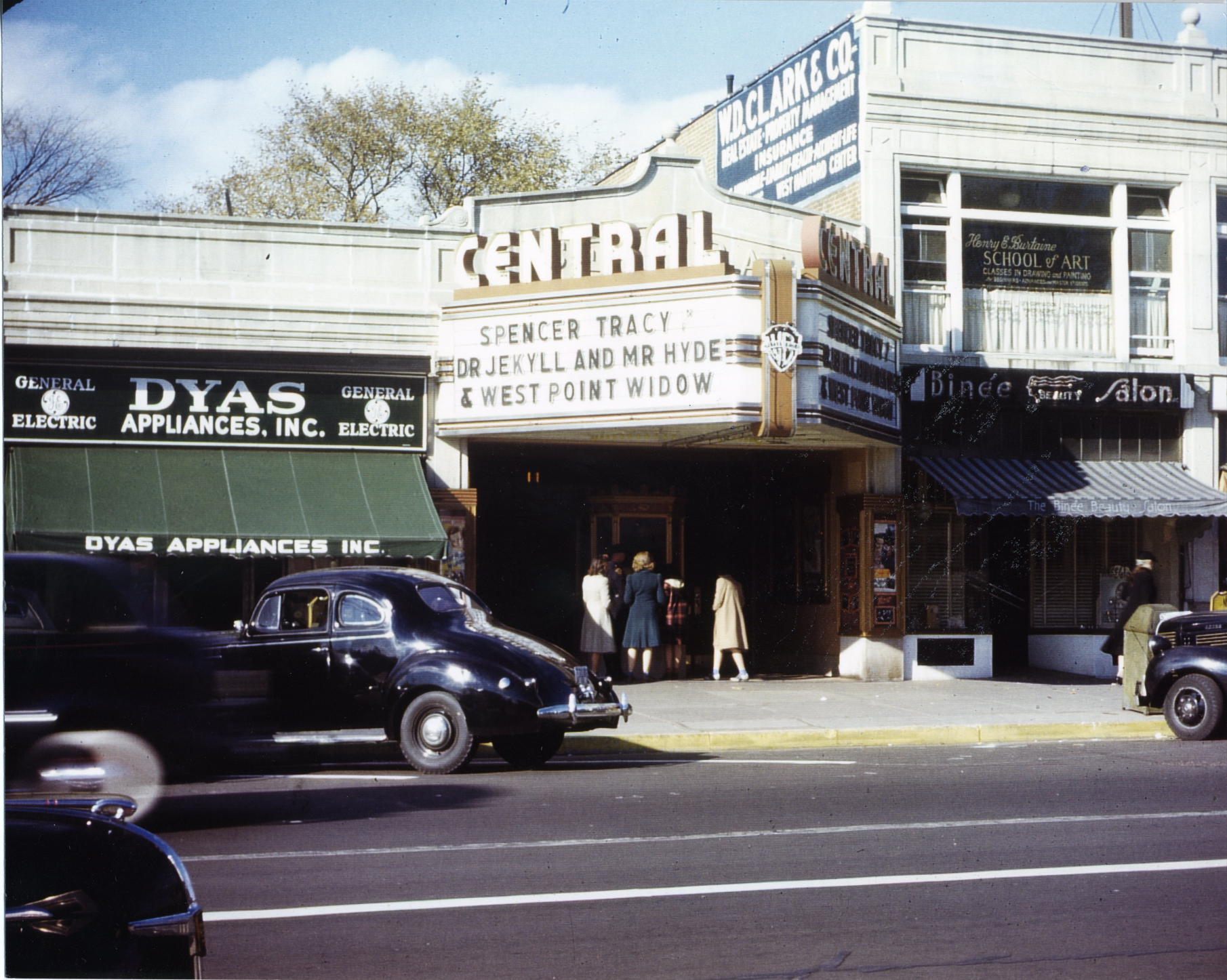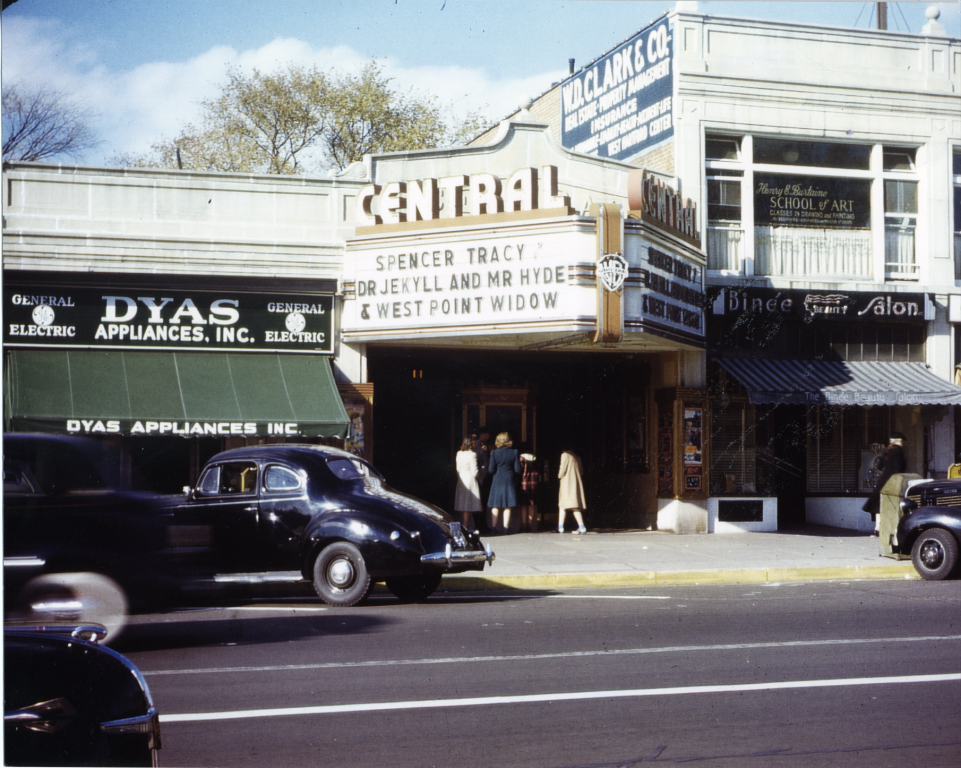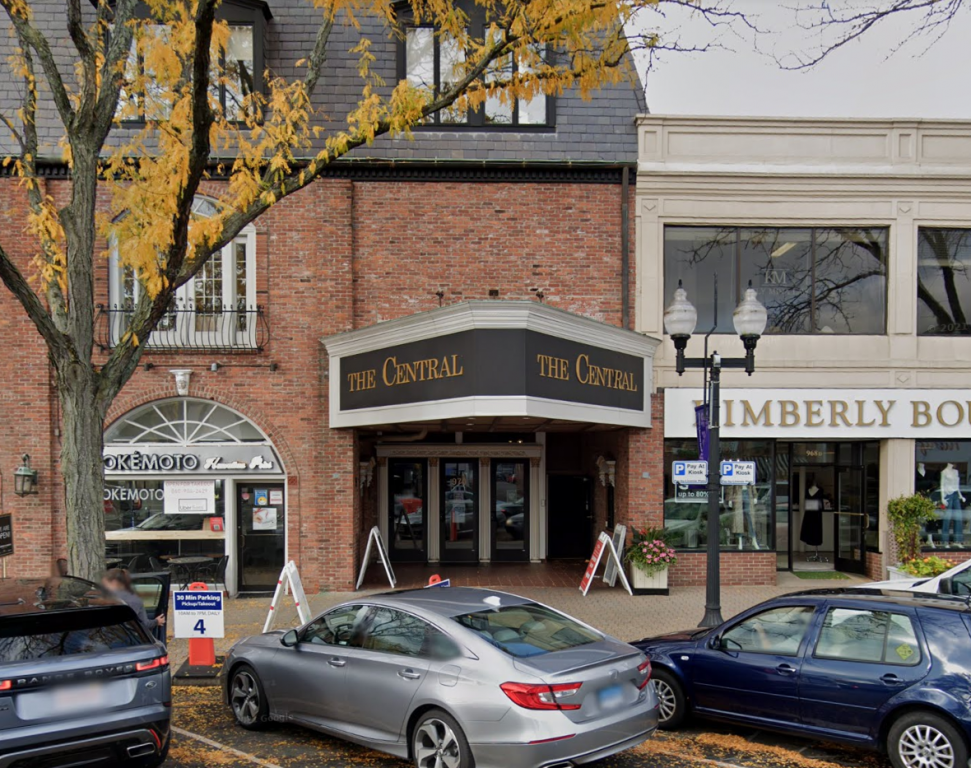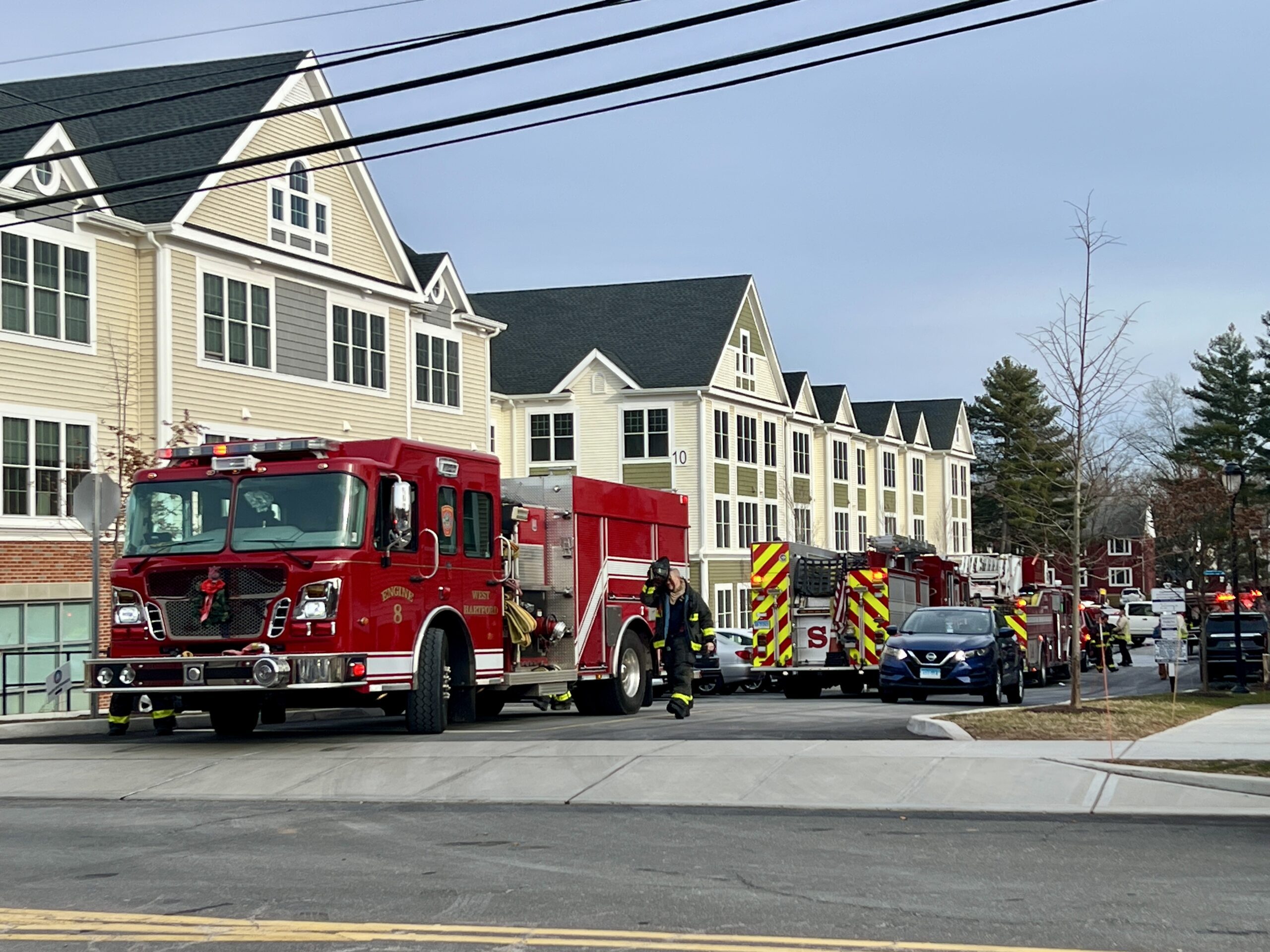From the West Hartford Archives: Central Theater

Audio By Carbonatix

Noah Webster House & West Hartford Historical Society archives
Historian Jeff Murray takes a look into West Hartford’s past to uncover some surprising information, stir up some memories, or reflect on how much life has changed – or hasn’t changed at all. Enjoy this week’s ‘From West Hartford’s Archives’ …
By Jeff Murray
The Central Theater opened at 972 Farmington Avenue under lessee David Weinstock on Dec. 1, 1927 and was the first movie picture theater in West Hartford. It seated 1,000 people on one floor in a semi-circle modeled after the Roman theater. Weinstock equipped the theater with an organ, moving picture machinery, and drop curtains, as well as the famous electric marquee on the outside.
Just a few years prior, the street was filled with 1890s cottages owned and lived in by families that are unknown now – the Brigham and Shelley cottages were bought and torn down to make way for this new Center development that had been planned for years.
A few months after it opened, six brick stores were built west of the theater entrance, filling in the land that once had houses standing on it.
This photo was taken 13 years later in October 1941, when “Dr. Jekyll and Mr. Hyde” and “West Point Widow” were showing at the Central Theater.
For nearly 50 years, the theater was a staple in West Hartford. Unfortunately, it was a victim of the economy and it closed in June 1977. It was temporarily a disco, which was short-lived, and then was purchased by developer Leonard Udolf in 1980 after the bank foreclosed on it.
There were plans by a group of developers to demolish the whole building and start from scratch, but once it was bought by Udolf, it was renovated in the 1980s. The current two-story brick façade was part of that overhaul. Fortunately, the Central Theater marquee remains today as a relic of the 1920s era it reflected.
In 1928, W. D. Clark & Company bought the property to the right of the Central Theater, which was still a one-story building, and constructed a second story addition in order to rent out the space for five more specialty shops. The large plate glass windows on the building were considered unique features at the time and the name “CLARK” is still embossed at the top of the building, so check that out the next time you’re walking around the Center.
The Center quickly became the prime place for small and large businesses alike. A Boston Branch grocery store opened across the street from the theater within a year, as well as a gas station. It also triggered the development of LaSalle Road in the early 1930s. This photo is a snapshot of this side of the Center in the early 1940s.
On the right of the Central Theater was the Binee Beauty Salon. Opened in the summer of 1935 at this location as a branch of the main Hartford salon, it employed five people under Alma Wuest Smith, an instructor at the Hartford Academy of Hairdressing. They started using the “world’s fastest hair dryers” that winter, bringing the hair drying time down from 45 minutes to 10 minutes. The branch moved out a few years later.
Above the salon was Henry E. Burtaine’s School of Art. According to his daughter Peggy’s obituary last February, her father Henry was concert master of Radio City Music Hall in the 1920s. The art class in the Center isn’t mentioned at all after the early 1940s, but Henry’s own obituary in 1966 noted that he was born in Russia and had an art studio in Hartford, taught music, and worked at Pratt & Whitney in West Hartford.
Dyas Appliances on the left was a General Electric appliance store, which opened on April 21, 1941. Headed by Danbury native Joe Dyas, a GE merchandiser, it advertised the latest in radios, refrigerators, washing machines, ironers, ranges, water coolers, and the new “butter conditioner.” A service department was trained on electrical repair work, like adjusting your toaster or overhauling your refrigerator. Marketing directly to women, it was just the beginning of the trend in appealing to housewives, a strategy that would become central to suburban America later in the 1950s. It was only at this location in the Center for less than a year.
In these three examples, this photo is one of the few that show them in the Center. There were many, many small businesses that came and went every few years, but no matter the lifetime, they all left a mark on the history of the Center. What do you remember of the Central Theater or the businesses in the area?

Central Theater, 1941. Noah Webster House & West Hartford Historical Society archives

Current view of the Central Building at 970 Farmington Avenue. Google Street View
Jeff Murray was born and raised in West Hartford and has been involved with the Noah Webster House & West Hartford Historical Society since 2011 when he was a high school student and won the Meyer Prize for his essay on local history. Jeff routinely volunteers as local history researcher uncovering information for numerous museum programs such as the West Hartford House Tour and West Hartford Hauntings. Jeff works as a data analyst at Pratt & Whitney.
Like what you see here? Click here to subscribe to We-Ha’s newsletter so you’ll always be in the know about what’s happening in West Hartford! Click the blue button below to become a supporter of We-Ha.com and our efforts to continue producing quality journalism.




[…] Source link […]
Dear Jeff, Beginning in 1952 when I was eight years old, The Central was the place to be on Saturday mornings. During intermission the Duncan Yo-Yo company had a contest each week for youngsters to compete for weekly prizes. Patches with company logos and dates, “diamond” studded yo-yos, extra strings etc. The ultimate” top of the line” bicycle was billed as the grand prize to be awarded at the end of the season. Hours were spent learning the moves of “walking the dog, over the falls, around the world” and the move that separated the winner from the rest was the number of continuous loops one could do without stopping.
I can’t remember when the time to meet young ladies at Maxwell Drug Store and go to “watch” the movies together started but the yo-yo period was over. Mr. Campbell was the manager of the Central Theater at the time and his son was on the Fire Department located on Brace Road.
I enjoy reading your articles for they bring back fond memories of growing up in WeHa.
Hi John,
Thanks for reaching out and sharing your experiences!
Hugh Campbell, the manager you mentioned, was also the manager during the time this photo was taken in 1941. He had a long history with the industry – started in Philadelphia as an usher. He came to Hartford in 1915 to be an operator at the Majestic Theater; then manager of the Princess Theater under Allen Morrison; assistant manager at Majestic; and then manager at the Rialto in Waterbury in 1927. By 1933, he was the manager of the State and Circle Theaters in Manchester, and then the Lenox on Albany Ave. He became manager of the Central around 1937 and was there for nearly 30 years until his passing in 1966.
When I was in high school in WH, my early curfew conflicted with the Central’s screening schedule. So my date and I would see the last half of a movie followed by the first half!
In 6th grade I developed a crush on a boy in my class. I’d see him on the playground when school was not in session. But the best part of our friendship was when we went to the Saturday morning movies at the Central Theater in West Hartford Center. He would come and sit next to me. We would have almost no conversation, but sometime during the movie he would put his arm across the back of my chair. I don’t think he ever actually touched me, but I thought it was the most romantic thing in the world. Every time I went to the Saturday morning movies, I would be hoping to see Bobby there. Thus, you can imagine my horror when my mother wanted me to take my younger brother along with me. My whole little fantasy world of romance came crashing down making me very angry at my mother. Of course I could not tell her why I didn’t want to bring my brother; in 1952 he was only six and I was a sophisticated twelve vear old.
Jeff, great job with these old pics and the research you do. I was born in 1950 and don’t recall the Saturday morning flics but do remember many Saturday afternoon double features. I’m also pretty sure there was a balcony there, though it may have been closed off towards the end (or am I confusing it with the balcony at the Elm theatre in Elmwood)